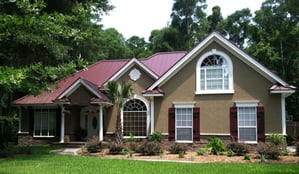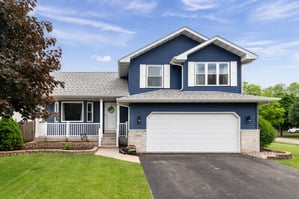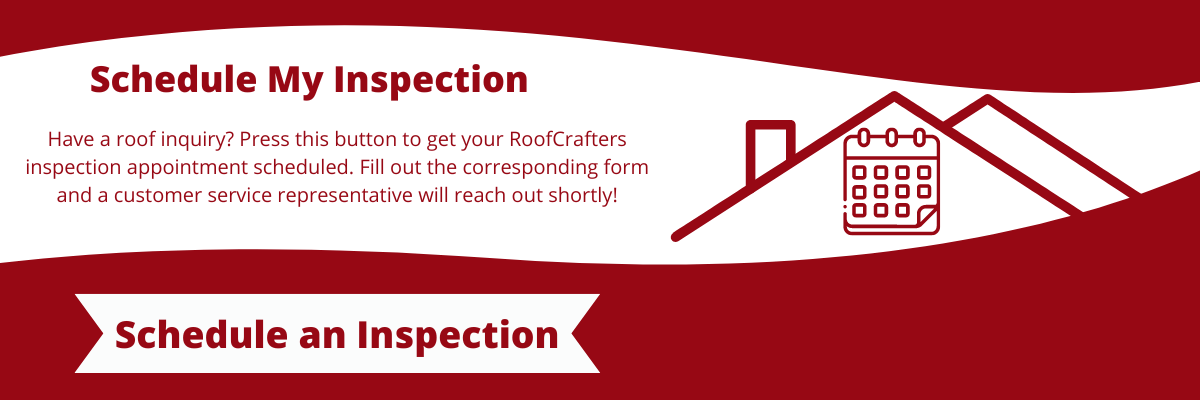
In regions prone to hailstorms, choosing the right roofing material becomes a critical decision for homeowners looking to protect their homes from potential damage. Hail, varying in size from small pebbles to larger stones, can pose a significant threat to roofs, leading to dents, cracks, or even structural issues. Understanding which roofing materials offer the best defense against hail impact is essential for those seeking durability and resilience in the face of these weather challenges!
Selecting the ideal roofing type for hail-prone areas involves considering a variety of factors. Different materials represent distinct properties that determine their ability to withstand hailstorms effectively. Whether it's the robustness of metal, the durability of concrete and clay tiles, or the impact resistance of asphalt shingles, each roofing material brings its unique set of advantages that play a crucial role in protecting homes against hail-related damage. RoofCrafters has repaired and replaced hail-damaged roofs for nearly thirty years, so we've got you covered in the hail questions department.
This article delves into the world of roofing materials that'll stand tough during hail. By giving you a detailed analysis of different roofing types and their unique abilities to withstand hailstorms, you can make fantastic decisions when selecting the most suitable roofing material to ensure your home remains well-protected against the perils of those small, icy balls. Let's go!
Three Roof Types Resistant to Hail
Selecting the most suitable roof material to withstand hail involves considering various factors, including durability, resilience, and impact resistance. Several roofing types offer varying degrees of protection against hail damage, each with its strengths and weaknesses. But which are the best for harsh weather events like these?
Metal Roofing
Metal roofing stands out as an exceptional choice for hail-prone regions due to its remarkable durability, strength, and superior resilience against hail impact. Its ability to withstand hailstorms makes it a popular and reliable option for homeowners facing frequent hail events.
One key factor contributing to metal roofing's effectiveness against hail is its innate toughness. Metal roofs, typically constructed from materials like steel, aluminum, or copper, possess inherent strength and rigidity that make them highly resistant to hail damage. These roofs are engineered to endure various weather conditions, including hailstorms, thanks to their durable construction.

Metal roofing materials are also often available in different gauges or thicknesses, with thicker gauges offering enhanced protection against hail impact. Thicker metals are less susceptible to denting or damage from smaller-sized hailstones. Additionally, certain metal roofs come with protective coatings, such as zinc or aluminum-zinc alloy coatings (galvalume), further bolstering their resistance to corrosion and hail impact.
An interesting fun fact on the topic of resilience is that some metal roofs are tested in controlled environments to measure their resistance to hail. They have undergone rigorous testing using ice balls or steel balls fired at high speeds to simulate hailstones. These tests demonstrate the exceptional ability of metal roofs to withstand hail impact, making them a reliable option for areas prone to severe weather conditions.
Concrete & Clay Roofing
Concrete and clay tile roofing emerges as an excellent choice for hail-prone regions due to its exceptional durability, resilience, and ability to withstand hail impact. These roofing materials have earned recognition for their robustness and ability to endure severe weather conditions, making them a preferred option for homeowners in areas susceptible to hailstorms.
One of the primary reasons concrete and clay tiles are highly regarded in hail-prone regions is their innate strength. Both concrete and clay tiles are known for their solid and rigid composition, which provides substantial resistance against hail impact. Their durable nature makes them less susceptible to damage from smaller hailstones, offering superior protection compared to some other roofing materials.

Another significant advantage of concrete and clay tiles in hail-prone areas is their resilience to weather-related wear and tear. These materials boast impressive longevity, with concrete tiles lasting around 50 years or more and clay tiles even longer—often exceeding 100 years. This extended lifespan demonstrates their ability to withstand repeated hailstorms without significant deterioration.
These tiles possess high density and thickness, allowing them to absorb and dissipate the energy from hailstones more effectively. Their solid structure and robustness enable them to withstand the impact of moderate-sized hailstones without sustaining significant damage.
Asphalt Shingle Roofing
Asphalt shingle roofing, while not as inherently resilient as metal or tile roofing, still holds its own as a popular and practical option for hail-prone areas due to several beneficial characteristics. These shingles are widely used across diverse climates and regions, offering moderate resistance against hail impact and presenting certain advantages that make them a viable choice in hail-prone areas.
One of the primary reasons asphalt shingles are considered suitable for hail-prone regions is their availability in various grades, including impact-resistant versions. Impact-resistant asphalt shingles, crafted with advanced technology and reinforced materials, are specifically designed to withstand hailstorms. These shingles undergo testing to assess their resistance to hail impact, providing homeowners with options tailored to their area's hail size and severity.

Asphalt shingle roofs, particularly those with impact-resistant properties, are also engineered to offer durability and protection against hail damage. The design of these shingles allows them to absorb some impact energy from hailstones, reducing the risk of damage compared to standard shingles. They are manufactured with additional layers or enhanced materials to provide better resistance against hail impact.
While asphalt shingle roofing may not provide the same level of hail resistance as metal or tile roofing, the availability of impact-resistant options, cost-effectiveness, and versatility make them a practical choice for homeowners in hail-prone areas looking for a balance between protection and affordability. Regular maintenance and timely repairs can further enhance their resilience against hail damage!
Can Your Roof Withstand Hail?
If so, it may be time to consider the health of your roof! It's essential to note that no roofing material is entirely impervious to hail damage, and factors such as the severity of hailstorms, proper installation, and regular maintenance also play significant roles in a roof's ability to endure hail impact. You should always consider your local climate, roofing budget, and the specific characteristics of each roofing material before making a decision.
By weighing the pros and cons of each roofing type discussed in this guide, you can hunker down and make an educated choice that best suits your needs and provides optimal protection against the hazards posed by hailstorms. A well-informed decision can ensure a roof that withstands the test of time and effectively shields homes from the challenges brought by hail in hail-prone areas!
Ready to talk to a professional? If you live in one of our service areas, help isn't far away! When you're ready, visit our contact page to connect with one of our friendly RoofCrafters representatives. We're excited to begin your roofing project!
My name is Kevin Mills, and I am the lead estimator for RoofCrafters’ Tampa division. I’m originally from Michigan, and I enjoy hunting, fishing, and spending any free time outdoors. What I’m most passionate about, though, is helping business owners and homeowners alike achieve their roofing goals, all while providing a seamless customer journey.




